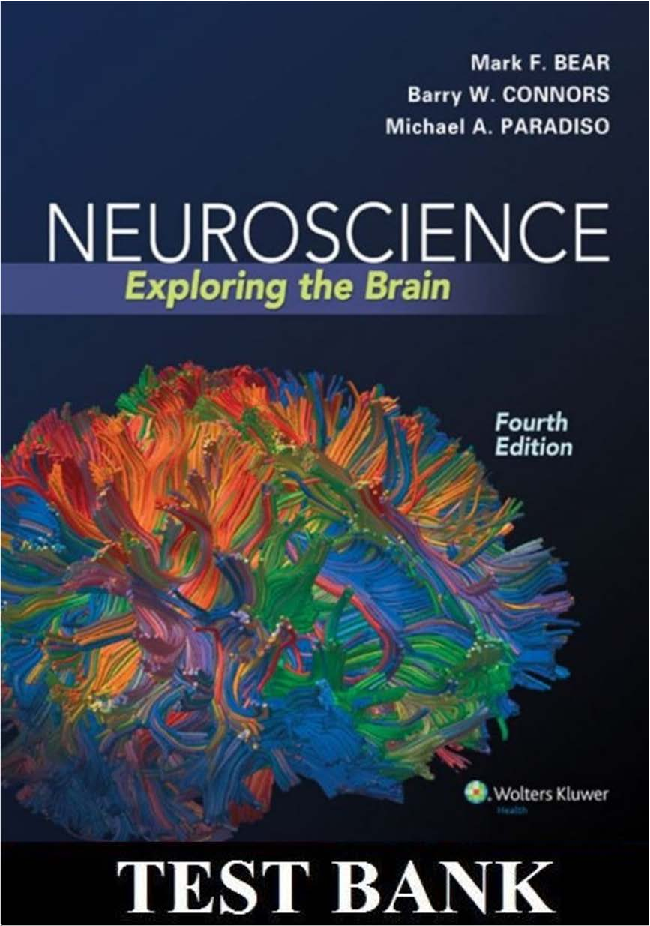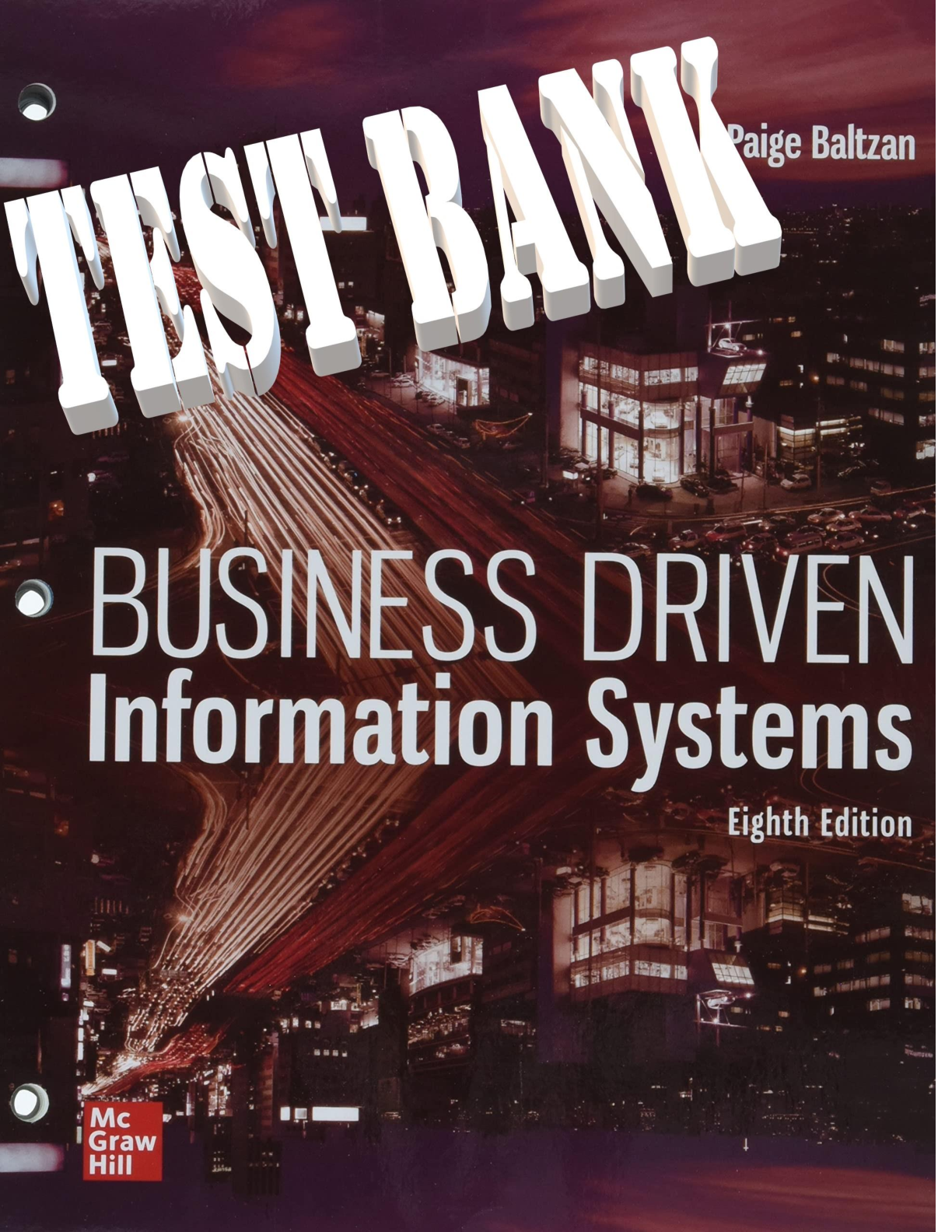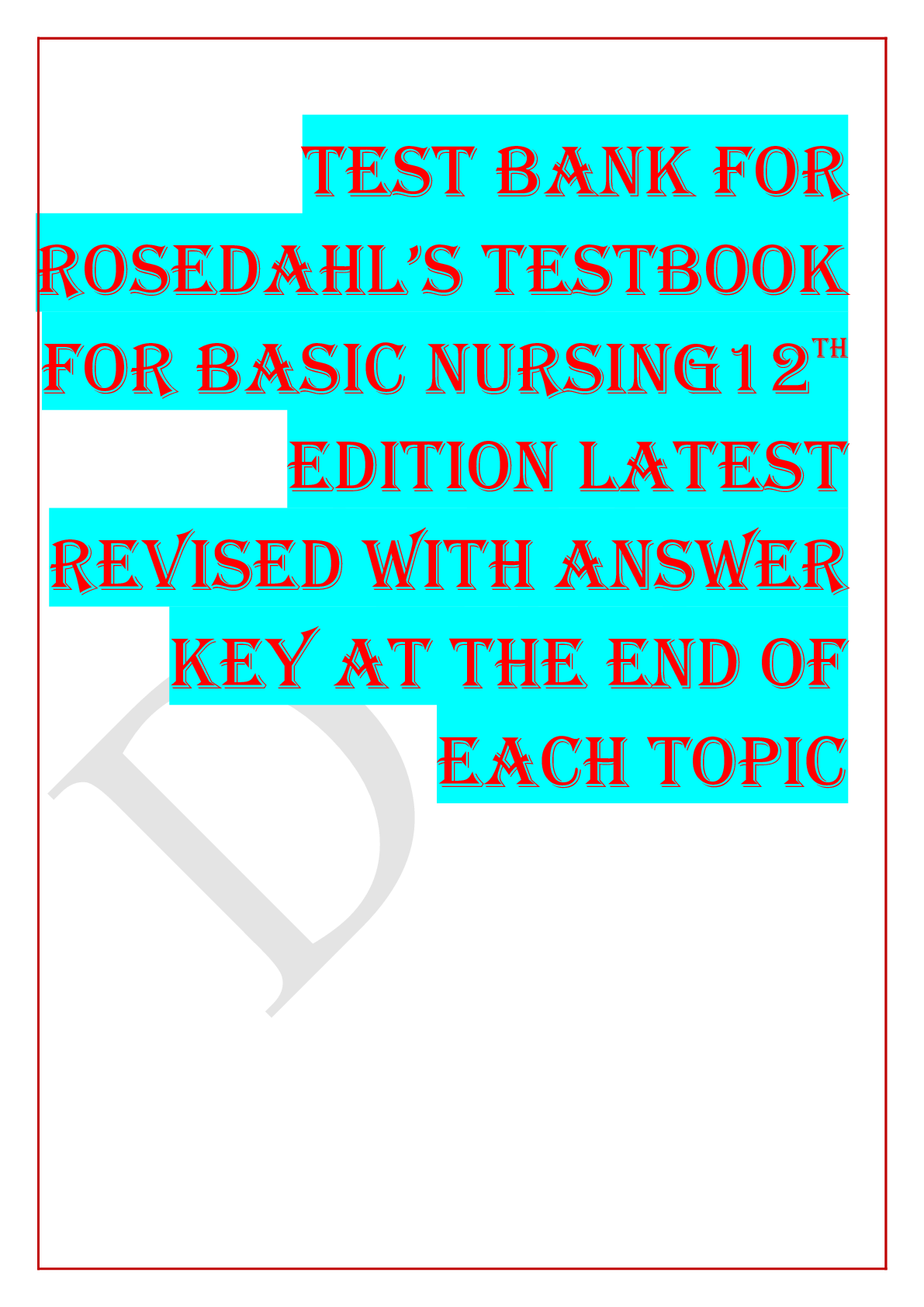Education > TEST BANKS > Test Bank For Understanding Human Differences Multicultural Education for a Diverse America Sixth Ed (All)
Test Bank For Understanding Human Differences Multicultural Education for a Diverse America Sixth Edition By Kent L. Koppelman Answers At The End Of Each Chapter
Document Content and Description Below
Test Bank For Understanding Human Differences Multicultural Education for a Diverse America Sixth Edition By Kent L. Koppelman Answers At The End Of Each Chapter-Multiple Choice Questions 1. What is ... a belief? a. A combination of attitudes b. Instruction that forces someone to accept an ideology c. An inference a person makes about reality d. An inclination that inhibits impartial judgment 2. What is an inference about reality? a. A value b. An attitude c. A belief d. A bias 3. People decide to take action or avoid an action based on their a. Values b. Beliefs c. Attitudes d. Universalistic perspective 4. Danny has worked hard all his life to send his children to college. He went to a parent teacher meeting and participated in his sons’ school activities. He was frugal with his money, missing vacations and expensive activities, to save for a college fund. To Danny education is a(n) a. Belief b. Value c. Attitude d. Universalistic perspective 5. Qwashma is a 16 year old girl. She does not want to dress in styles her parents like because she insists that she wants to show her own individual style; however, she and her friends dress exactly alike, even sharing clothing, jewelry, makeup and hair coloring. What is Qwashma demonstrating? a. Indoctrination b. Consistent inconsistency c. Values d. Majority rule 6. Which of the following is not a listed as a top nine core values of American society? a. Right to bear arms b. Equality c. Rule of law d. Community and National Welfare 7. Six year old Jhante insists he can dress himself for school alone but he often ends up wearing strange combinations of superhero costumes and cowboy boots. His mom wants him to dress nicely so in the morning she lays out 2 shirts and 2 pants for him to pick from. What approach is Jhante’s mother using to get him to dress nicely? a. Setting an example b. Appealing to his conscience c. Limited choices d. Persuading or convincing 8. Dr. Cartaina assigns his students in an introductory education class to watch a movie about a great teacher and discuss the difficulties and triumphs the teacher faced during class. In what way is Dr. Cartaina teaching the value of perseverance to his students? a. Reinforcing dogma b. Enforcing rules and regulations c. Offering limited choices d. By providing inspirational materials 9. Courtney’s parents tell her that she should never smoke, giving her many reasons why it is a bad habit, however they smoke. What are Courtney’s parents illustrating? a. Values b. Indoctrination c. Commitment d. Hypocrisy 10.As a teenager, Je questions his parents’ values and wants to make up his own mind about his life. His parents insist that to question them goes against the family and they expect him to accept their values without question. What does this way of teaching values illustrate? a. Indoctrination b. Hypocrisy c. Limiting choices d. Persuasion to accept values 11.According to Kniker (1977) which of the following is not an effective method to approach teaching values? a. Tell children what to do and expect them to do it without question b. Listen to the perspectives of others c. Offer opportunities for discussion and debate d. Ask them to consider how their actions will affect others 12.Joe is an accountant who believes that women are not good in mathematical professions. He is in charge of hiring someone to help out in his business part time. After interviewing two candidates, he hires the male over the female although she was better qualified for the job. This is an example of what concept? a. Bias b. Discrimination c. Stereotype d. Prejudice 13.Put the following terms in order from least intensity to strongest intensity. a. Stereotype, bias, prejudice, bigotry b. Bias, stereotype, prejudice, bigotry c. Bigotry, prejudice, stereotype, bias d. Bias, stereotype, bigotry, prejudice 14. Stereotypes that are considered positive a. Are not harmful because they cast persons or groups favorably. b. Are more accurate than negative stereotypes. c. Allow for more accurate perceptions of persons or groups to be formed. d. Create inaccurate perceptions of persons or groups. 15. Which of the following statements is not accurate about stereotypes? a. Stereotypes can be positive or negative. b. Positive stereotypes can be as harmful as negative stereotypes. c. Stereotypes allow accurate perceptions about others to be formed. d. Stereotypes assume a person has a particular trait based on their group membership. 16.How can teachers encourage students to overcome confirmation bias? a. By asking them to take a stance and stick to it b. By teaching students to be open minded when faced with contradictory or ambiguous information c. By telling them to accept the word of the teacher as fact d. By realizing that it is not the job of schools to teach values and following the beliefs of the parents 17.Terry believes that teenagers are lazy troublemakers even though he has experienced many teenagers who work hard at their jobs and in school. When he sees a teenager not working or reads a newspaper story about a teenager who gets in trouble, he complains loudly about the lack of work ethic in teenagers today. What is Terry exhibiting? a. Discrimination b. Bigotry c. Confirmation bias d. Values 18.Calvin, a Caucasian man from South Africa, moved to the United States at the age of 20 to go to school for physical therapy. He stayed in the United States and became a U.S. citizen. During a session his client, Nanci, noticed his unusual accent and asked him where he was from. When he replied South Africa, the client smiled and said, “Well, you are the first white African American I have ever met.” This made Calvin uncomfortable and he quickly changed the subject. Was Nanci correct in saying Calvin was a white African American? a. Yes, Calvin’s race was white and his ethnicity was African and his nationality was American. b. Yes, Calvin’s ethnicity was white and his nationality was African and his race was American. c. No, Calvin was white and African Americans are black. d.No, Calvin nationality will always be South Africa even if he changes his citizenship. 19.Race refers to while ethnicity refers to . a. A scientific concept; cultural differences b. Physical differences; cultural differences c. A non-scientific concept; nationality d. Skin color; an individual’s native language 20.You are at a meeting. In the meeting are 12 white males, 14 black males, 2 Latino males, 29 White females, 36 black females and 4 Latina females. Which group would be considered the majority or dominant group by American standards? a. White females b. White males c. Black males d. Black females 21.A distinction between the terms ʺminority groupʺ and ʺdiversityʺ is that a. They can be used interchangeably. b. ʺMinority groupsʺ concede power to majority groups while ʺdiverseʺ groups share power equally. c. ʺMinority groupʺ refers only to race while ʺdiversityʺ refers to all manner of human differences. d. ʺMinority groupʺ implies an oppressive power differential while ʺdiversityʺ refers to all manner of human differences. 22.How are group labels and human behavior related? a. There is no correlation has been found between group labels and human behavior. b. A person’s sense of identity is not affected by labels. c. Prejudice is often based upon those labels. d. Labels cannot be used to control group behavior. 23.Differences in the interpretations of the words ʺmigrantʺ and ʺsettlerʺ illustrate the power of a. Language and labeling. b. Consistent inconsistency. c. Discrimination. d. Values. 24.At what age does true racial awareness, or the understanding that skin color can carry negative connotations, become an issue for children? a. Four to five b. Six to seven c. Eight to nine d. Nine to ten 25.Why is name calling as damaging to the dominant group members as to the minority group members? a. it makes the name callers feel inferior. b. It creates boundaries that cannot be crossed without difficulty. c. It does not allow minority groups to claim certain words as their own. d. It negatively affects the dominant group by putting them in a superior position. 26.Socially derisive terms used in bureaucratic contexts a. Are less harmful than informal social labels. b. Demonstrate that poor people are culturally flawed. c. Need to be considered carefully in order to reduce stereotyping. d.Have the sanction of authority therefore promoting powerful negative messages. 27. When addressing social problems, what does the exceptionalistic perspective focus on? a. Problems are caused by individual defects. b. Problems can be solved by individuals. c. Problems are a result of social structures. d. Problems are both predictable and preventable. [Show More]
Last updated: 5 months ago
Preview 5 out of 218 pages

Loading document previews ...
Buy this document to get the full access instantly
Instant Download Access after purchase
Buy NowInstant download
We Accept:

Reviews( 0 )
$13.50
Can't find what you want? Try our AI powered Search
Document information
Connected school, study & course
About the document
Uploaded On
Jan 06, 2025
Number of pages
218
Written in
Additional information
This document has been written for:
Uploaded
Jan 06, 2025
Downloads
0
Views
22
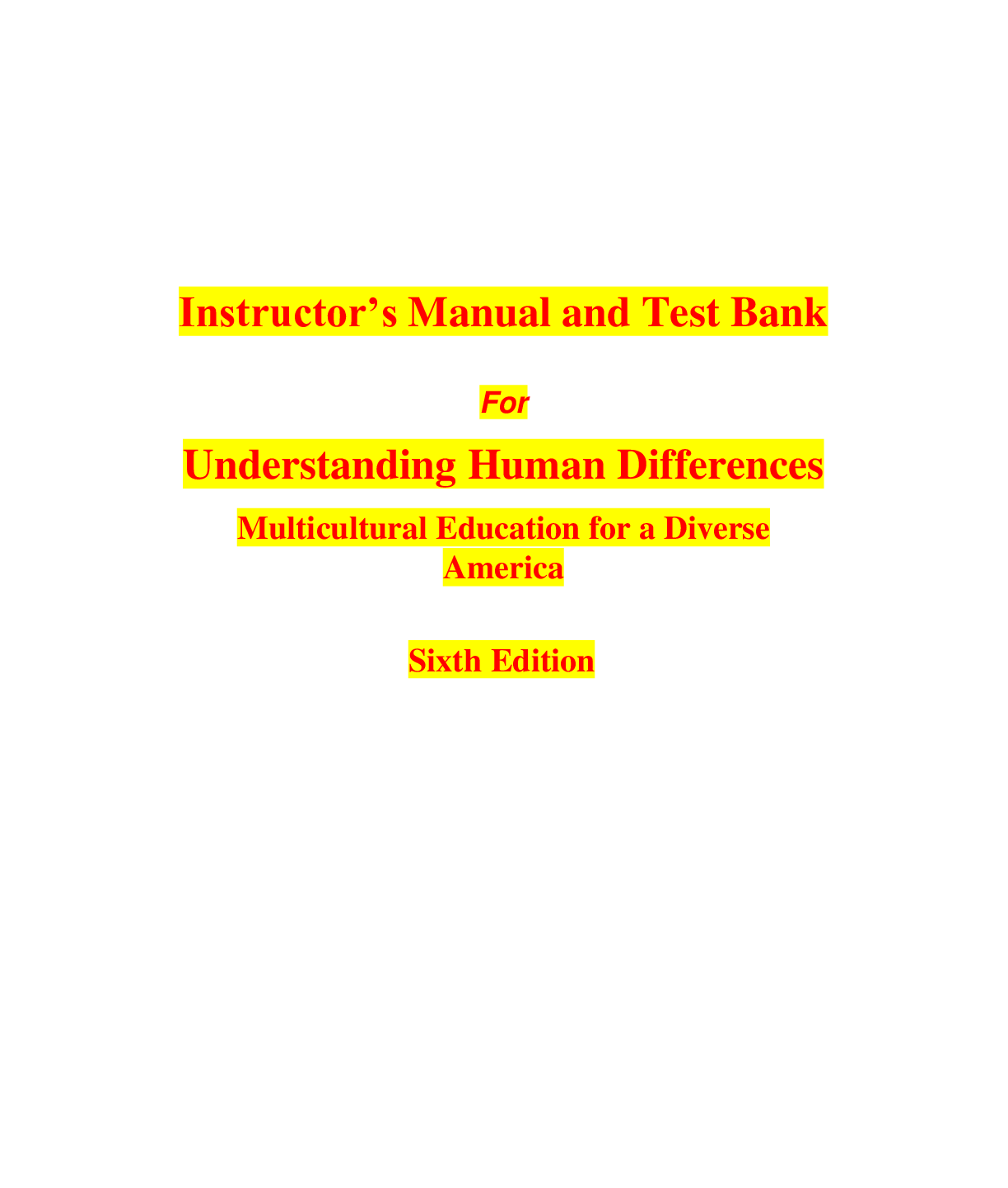

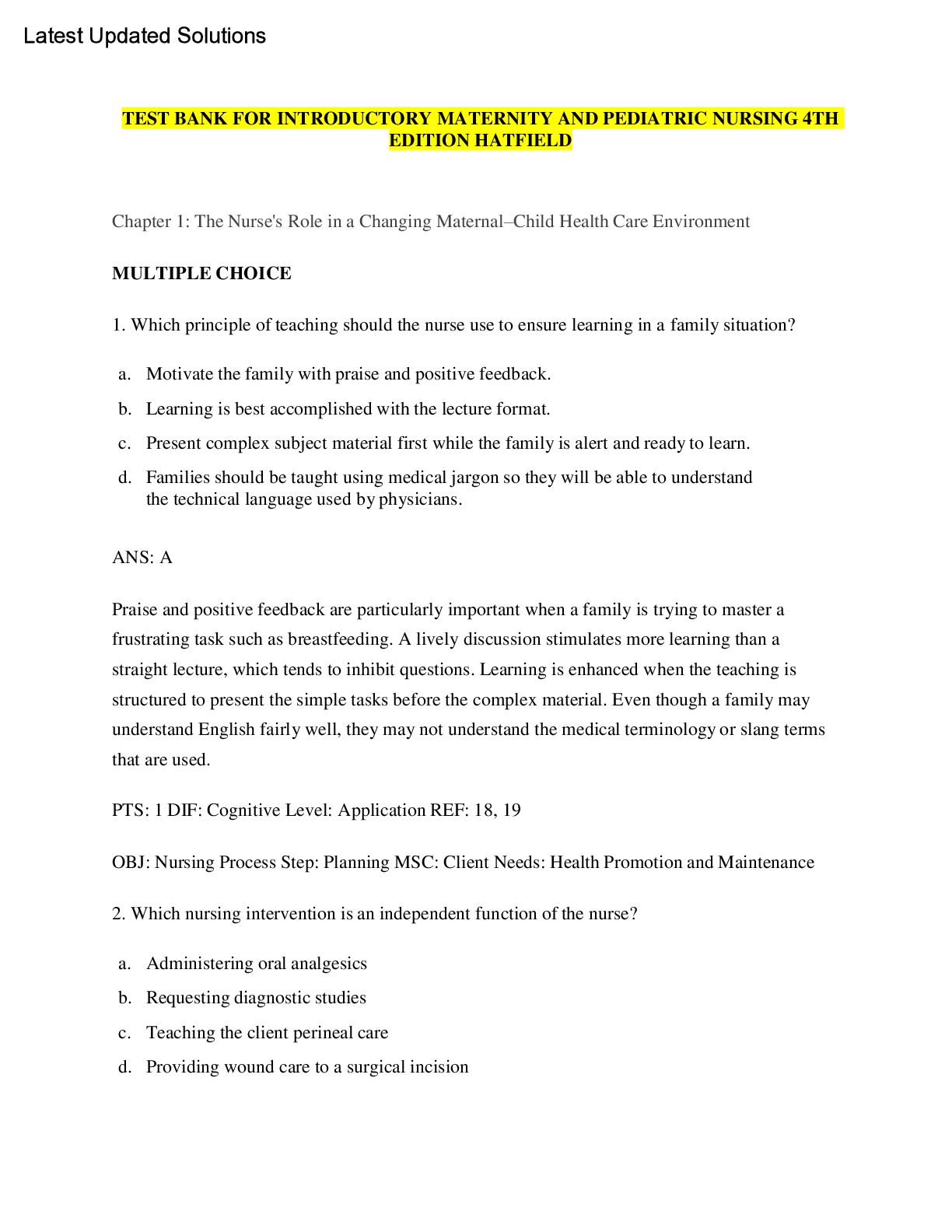
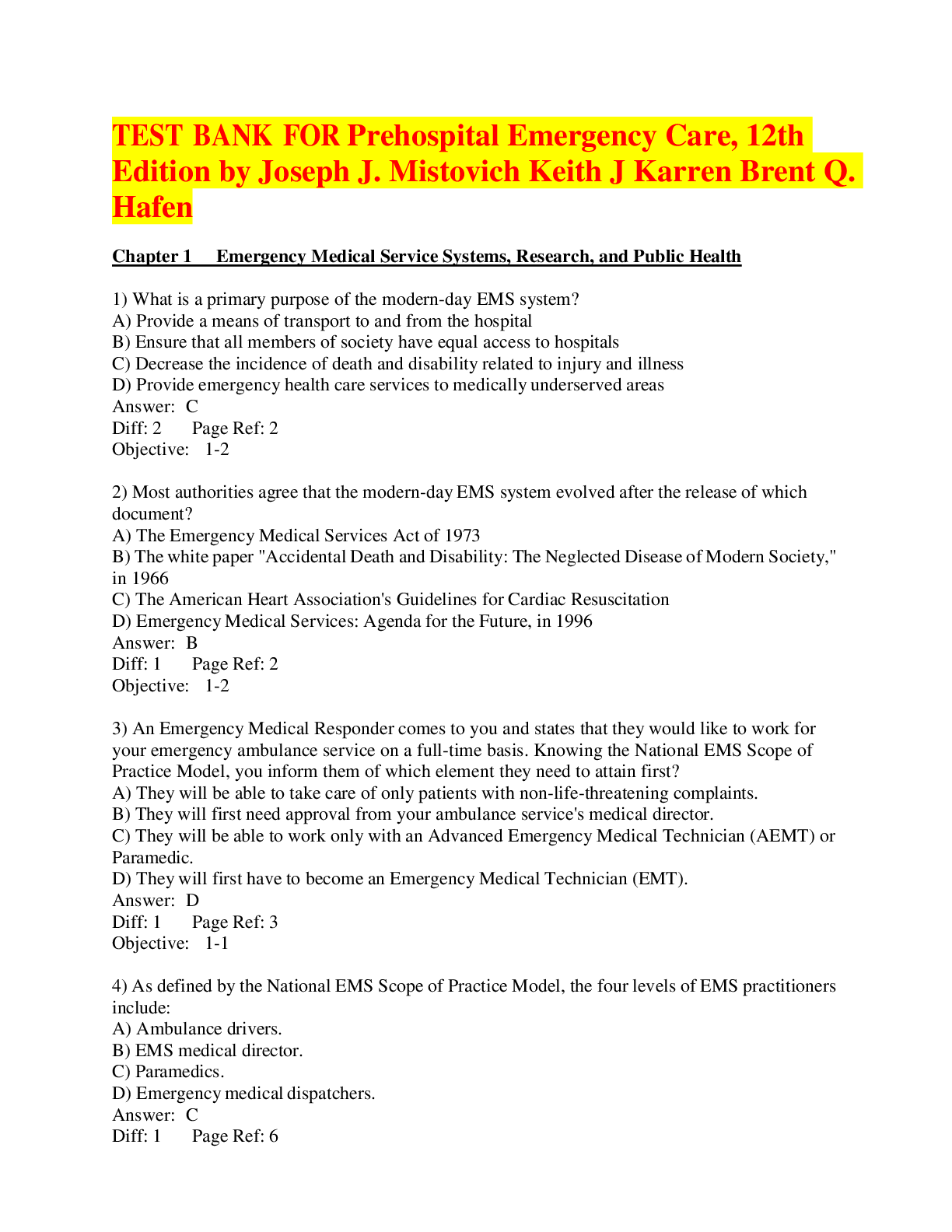


_compressed.png)
.png)
.png)


.png)

.png)

